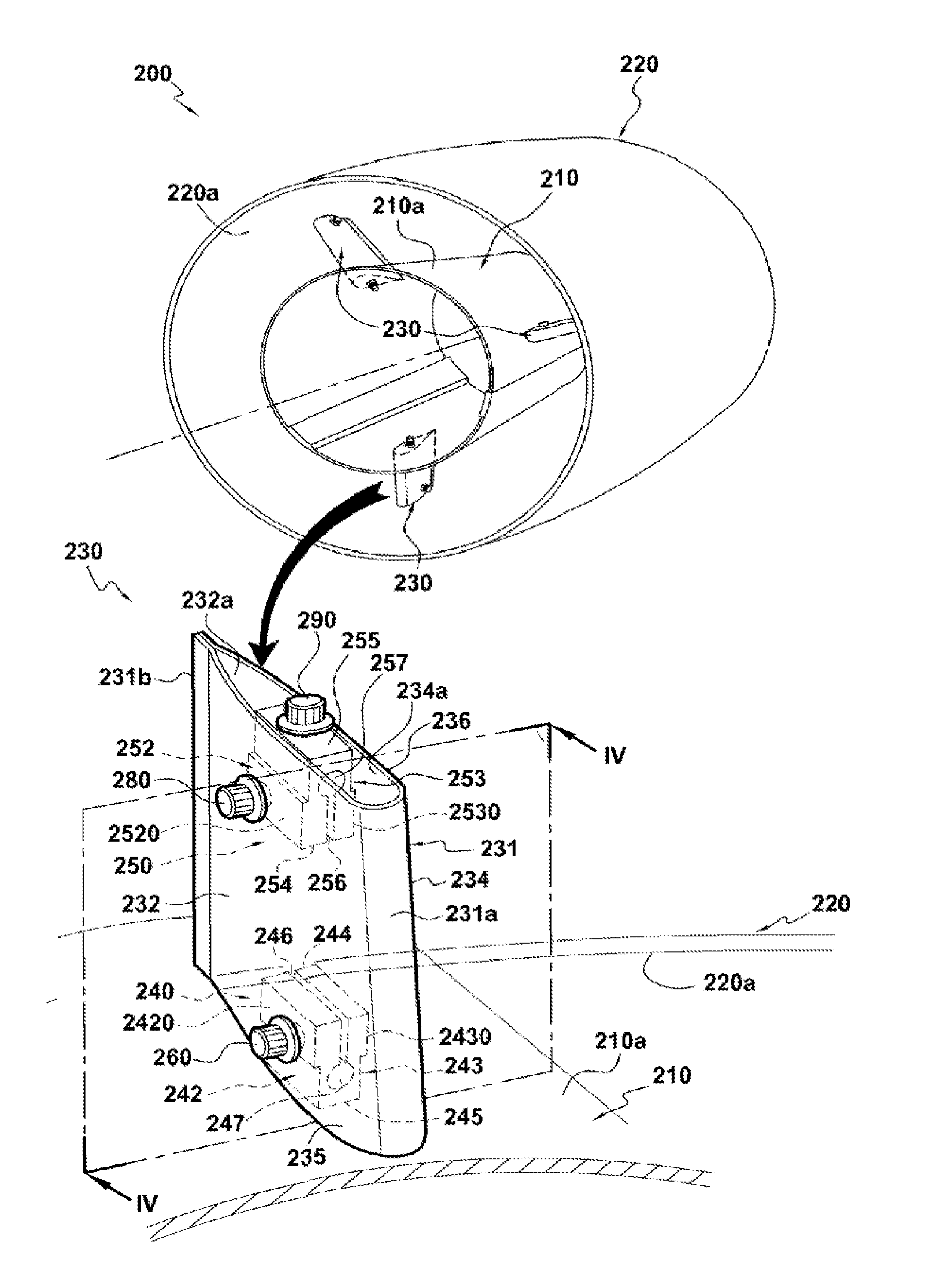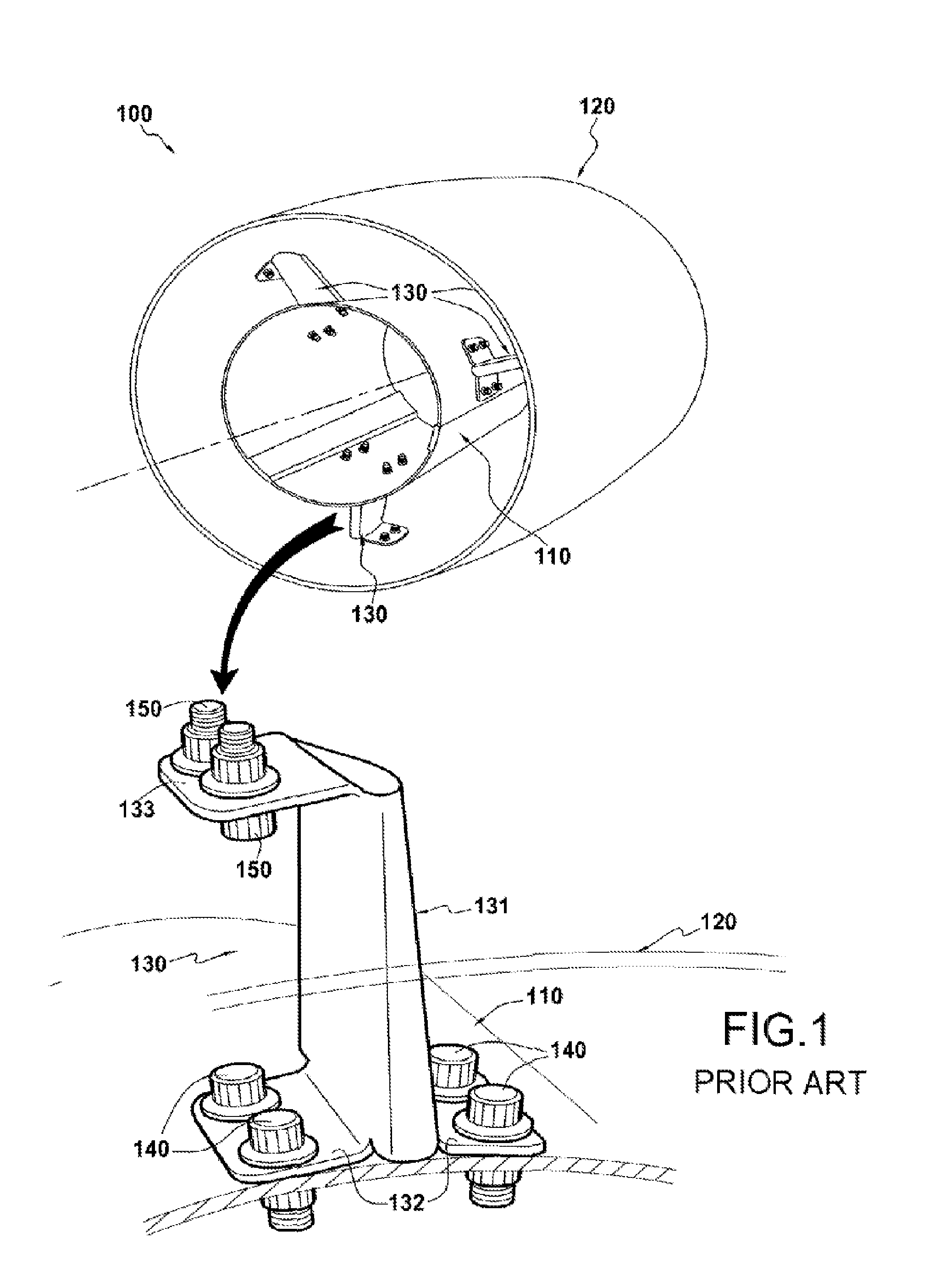Device for Fastening a Hollow Part
a technology for fastening devices and hollow parts, applied in the direction of rod connections, air transportation, combustion processes, etc., can solve the problems of increasing the overall size of each arm, difficult to determine the dimensions of the angle tabs, and introducing composite material arms in this way, so as to achieve accurate fitting and adjust the flexibility of movement
- Summary
- Abstract
- Description
- Claims
- Application Information
AI Technical Summary
Benefits of technology
Problems solved by technology
Method used
Image
Examples
Embodiment Construction
[0023]The present invention proposes an assembly comprising at least one fastener device, one or more hollow parts, and one or more structural parts, the hollow parts and the structural parts being made of metal material or of composite material.
[0024]FIG. 2 shows a helicopter engine exhaust assembly 200 comprising an exhaust cone 210 and a converging nozzle 220 that is held coaxially on the exhaust cone 210 by means of three arms 230. The exhaust cone 210 and the nozzle 220 are made of composite material. Nevertheless, one of those two parts or indeed both of them could be made of a metal material. The arms 230 are made of thermostructural composite material, specifically CMC material.
[0025]In well-known manner, the CMC material parts are constituted by fiber reinforcement made of refractory fibers (carbon fibers or ceramic fibers) and densified by a ceramic matrix, in particular made of carbide, nitride, refractory oxide, . . . . Typical examples of CMC materials are C—SiC materia...
PUM
 Login to View More
Login to View More Abstract
Description
Claims
Application Information
 Login to View More
Login to View More - R&D
- Intellectual Property
- Life Sciences
- Materials
- Tech Scout
- Unparalleled Data Quality
- Higher Quality Content
- 60% Fewer Hallucinations
Browse by: Latest US Patents, China's latest patents, Technical Efficacy Thesaurus, Application Domain, Technology Topic, Popular Technical Reports.
© 2025 PatSnap. All rights reserved.Legal|Privacy policy|Modern Slavery Act Transparency Statement|Sitemap|About US| Contact US: help@patsnap.com



